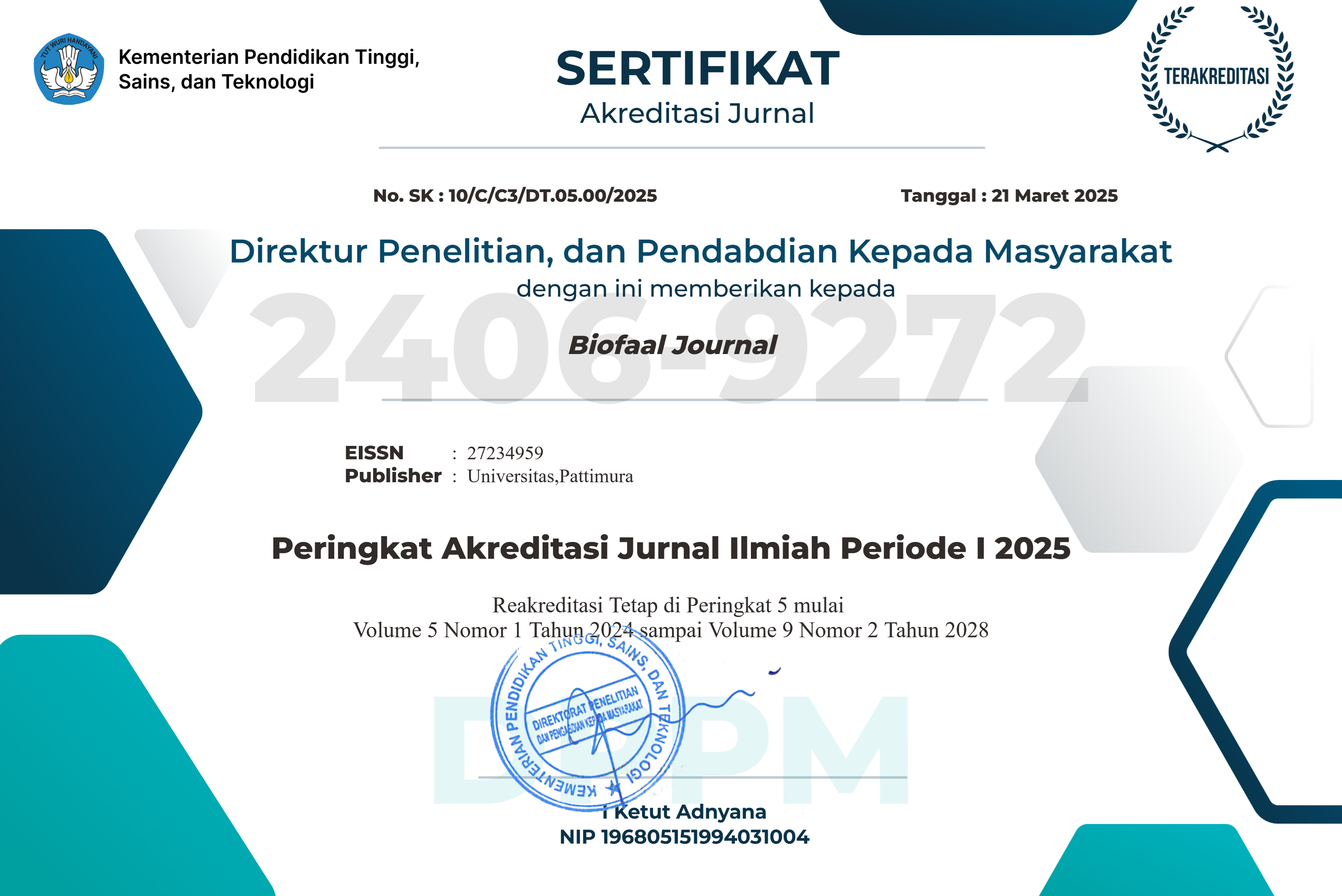LITERATURE REVIEW: TANAMAN TENGKAWANG (Shorea Sp.) DI KALIMANTAN BARAT
Abstract
Biodiversity is an important asset for life on earth, including in Indonesia which has high biodiversity. One of the plant species that has important biodiversity in West Kalimantan is Tengkawang (Shorea spp.). However, the existence of Tengkawang plants in West Kalimantan currently faces various problems that need to be addressed seriously. This study aims to review Tengkawang plants in West Kalimantan with a focus on morphology, habitat, utilization, distribution patterns, and harvesting patterns of Tengkawang. The literature study was conducted using the Systematic Literature Review (SLR) design with a span of 2014-2024. The results of the review of these 5 articles indicate that Tengkawang plants have tree habitats, the general habitat of Tengkawang (Shorea spp.) is found in tropical forests of Southeast Asia, Tengkawang fruit, stems and sap have many benefits especially for economic purposes, The harvesting pattern of tengkawang fruit is carried out traditionally by collecting tengkawang seeds that fall on the forest floor. And the distribution pattern of tengkawang found includes, among others, rambai tengkawang (Shorea mecistopteryx), sekadau tengkawang (Shorea marcophylla), and tahangul tengkawang (Shorea stenoptera).
Downloads
Copyright (c) 2024 Filardha Azelia Vallahayil, Syamswisna Syamswisna, Rifka Elsya Suhardi, Mira Tirta Yani, Wilma Wilma, Luviana Putri

This work is licensed under a Creative Commons Attribution-NonCommercial-ShareAlike 4.0 International License.
1. Author retain copyright and grant the journal right of first publication with the work simultaneously licensed under a creative commons attribution license that allow others to share the work within an acknowledgement of the work’s authorship and initial publication of this journal.
2. Authors are able to enter into separate, additional contractual arrangementfor the non-exclusive distribution of the journal’s published version of the work (e.g. acknowledgement of its initial publication in this journal).
3. Authors are permitted and encouraged to post their work online(e.g. in institutional repositories or on their websites) prior to and during the submission process, as it can lead to productive exchanges, as well as earlier and greater citation of published works.








